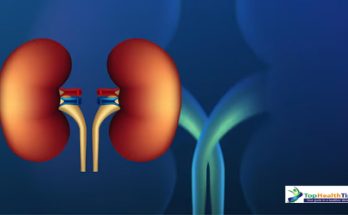Gastritis is a condition that affects the lining of the stomach, leading to inflammation and discomfort. This article will help you understand what Gastritis: Causes & Treatments and how it can be treated.
Types of gastritis
Acute Gastritis : Sudden inflammation, often due to irritants like alcohol or NSAIDs.
Chronic Gastritis : Long-term inflammation, usually caused by ongoing irritants or infections.
Helicobacter pylori Gastritis : Caused by infection with Helicobacter pylori bacteria.
Autoimmune Gastritis : Caused by the body’s immune system attacking the stomach lining.
Erosive Gastritis : Characterized by erosion of the stomach lining, often due to severe irritation.
Reactive Gastritis : Resulting from exposure to chemicals or irritants, such as bile.
Atrophic Gastritis : Long-term inflammation leading to thinning of the stomach lining.
Causes of Gastritis
- Helicobacter pylori Infection: Bacterial infection causing chronic inflammation.
- Excessive Alcohol: Damages and irritates the stomach lining.
- NSAIDs Overuse: Prolonged use of pain relievers leading to irritation.
- Autoimmune Disorders: Immune system attacks the stomach lining.
- High-Stress Levels: Increases stomach acid and inflammation.
- Dietary Habits: Spicy, acidic, or fatty foods causing irritation.
- Smoking: Elevates stomach acid and impairs healing.
- Bile Reflux: Backflow of bile causing irritation.
- Other Infections: Fungal or viral infections inflaming the stomach.
- Supplement Overuse: High doses of certain supplements irritating the lining.
Understanding these causes helps in effective management and prevention of gastritis.
Most Common Symptoms of Gastritis
Gastritis, which is inflammation of the stomach lining, can cause a variety of symptoms. Some of the most common symptoms include:
- Abdominal Pain: Often felt in the upper abdomen, this pain can range from a dull ache to a sharp, burning sensation.
- Nausea: You might feel queasy or have the urge to vomit.
- Vomiting: Some people with gastritis experience vomiting, which can sometimes include blood or a substance that looks like coffee grounds.
- Bloating: A feeling of fullness or swelling in the abdomen can occur.
- Indigestion: You might experience discomfort or pain after eating, often described as a feeling of fullness or burning in the stomach.
- Loss of Appetite: The discomfort or pain may make you less interested in eating.
- Belching: Increased burping or a feeling of trapped gas can be a symptom.
- Dark Stool: If gastritis leads to bleeding in the stomach, it can cause stools to appear black or tarry, which indicates digested blood.
- Fatigue: Persistent gastritis can sometimes lead to feelings of tiredness or weakness, especially if it causes bleeding.
If you have severe or persistent gastritis symptoms like significant abdominal pain, vomiting blood, or black stools, seek medical attention immediately. Otherwise, gastritis can lead to serious complications.

Diagnosing Gastritis
To diagnose gastritis effectively, your healthcare provider may use several methods:
- Medical History Review: First, discuss your symptoms, medications, and lifestyle.
- Physical Examination: Next, check for tenderness or pain in the abdomen.
- Endoscopy: Additionally, use a camera to view the stomach lining and identify inflammation.
- Biopsy: During endoscopy, a tissue sample may be taken for further analysis.
- Blood Tests: Also, check for anemia, infection, or inflammation markers.
- Stool Tests: Moreover, detect blood or infections like H. pylori in your stool.
- Imaging Studies: Finally, X-rays or other imaging may be used to examine structural changes.
Early and accurate diagnosis is crucial for effective treatment. If you experience symptoms, consult a healthcare provider for a comprehensive evaluation.
Impact of Lifestyle on Gastritis
Lifestyle choices greatly influence gastritis. Here’s how:
- Excessive Alcohol: Irritates the stomach lining and increases acid production, worsening inflammation. Reducing alcohol can help manage symptoms.
- High-Stress Levels: Elevates stomach acid, aggravating gastritis. Stress management techniques can be beneficial.
- Dietary Habits: Spicy, acidic, or fatty foods increase stomach irritation. A balanced diet can reduce inflammation.
- Smoking: Increases stomach acid and impairs healing. Quitting smoking improves gastritis conditions.
- Overuse of NSAIDs: Damages the stomach lining and aggravates gastritis. Use these medications cautiously.
- Irregular Eating Patterns: Disrupts acid balance and irritates the stomach. Regular meals help stabilize acid levels.
- Poor Hydration: Leads to increased stomach acid and irritation. Staying hydrated supports stomach health.
Making mindful lifestyle changes, such as managing stress, avoiding irritants, and maintaining hydration, can help manage and prevent gastritis effectively.
Possible Complications of Gastritis
- Peptic Ulcers: Sores on the stomach lining or intestines causing pain and bleeding.
- Stomach Bleeding: Erosion of blood vessels leading to black or bloody stools and vomiting.
- Anemia: Iron or vitamin B12 deficiency from chronic gastritis resulting in fatigue and weakness.
- Atrophic Gastritis: Thinning stomach lining that reduces acid production and impairs digestion.
- Increased Risk of Stomach Cancer: Long-term inflammation may elevate the risk of stomach cancer.
- Dyspepsia (Indigestion): Persistent upper abdominal discomfort affecting quality of life.
Managing gastritis effectively helps prevent these serious complications.

Management and Treatment of Gastritis
Medications:
- Antacids: Neutralize stomach acid for immediate relief.
- Proton Pump Inhibitors (PPIs): Reduce acid production and promote healing.
- H2-Receptor Antagonists: Decrease stomach acid and help with inflammation.
- Antibiotics: Prescribed if Helicobacter pylori infection is present.
Dietary Adjustments:
- Avoid Irritants: Limit spicy, acidic, and fatty foods that aggravate symptoms.
- Eat Smaller Meals: Frequent, smaller meals can reduce stomach acid production.
- Stay Hydrated: Drink plenty of water to help soothe the stomach lining.
Lifestyle Changes:
- Reduce Alcohol Consumption: Minimize or eliminate alcohol intake to avoid irritation.
- Quit Smoking: Smoking cessation helps improve stomach lining health.
- Manage Stress: Practice stress-reducing techniques like meditation or yoga.
Avoid NSAIDs: Use alternative pain relievers if possible, as NSAIDs can worsen gastritis.
Regular Monitoring: Follow up with healthcare providers to monitor progress and adjust treatment as needed.
Effective treatment requires a combination of medications, dietary changes, lifestyle adjustments, and regular medical check-ups.
Conclusion
Understanding Gastritis: Causes and Treatments gastritis is crucial for managing and alleviating its symptoms effectively. By recognizing the underlying causes—whether they are related to infections, medications, or lifestyle factors—you can take proactive steps towards treatment and prevention. Symptoms such as abdominal pain, nausea, and indigestion serve as important indicators that shouldn’t be ignored. With a range of treatment options available, from lifestyle adjustments and dietary changes to medications, it’s possible to manage gastritis and improve your quality of life. Always consult with a healthcare professional to tailor a treatment plan that best suits your individual needs. Remember, early intervention and informed management are key to maintaining a healthy digestive system.
Related Post for Disease & Remedy >>
References:
Johns Hopkins Medicine:Gastritis – Causes and Treatment
Cleveland Clinic:Gastritis – Symptoms, Causes, and Treatment
Harvard Health Publishing:Understanding Gastritis
National Health Service (NHS):Gastritis Overview
American College of Gastroenterology:Gastritis




